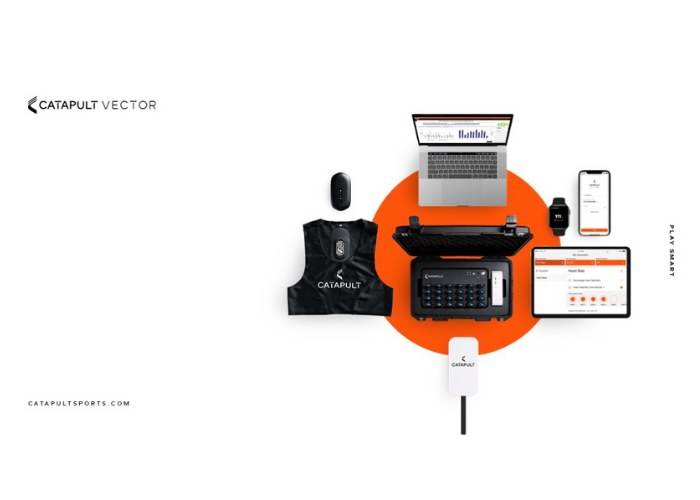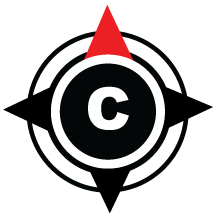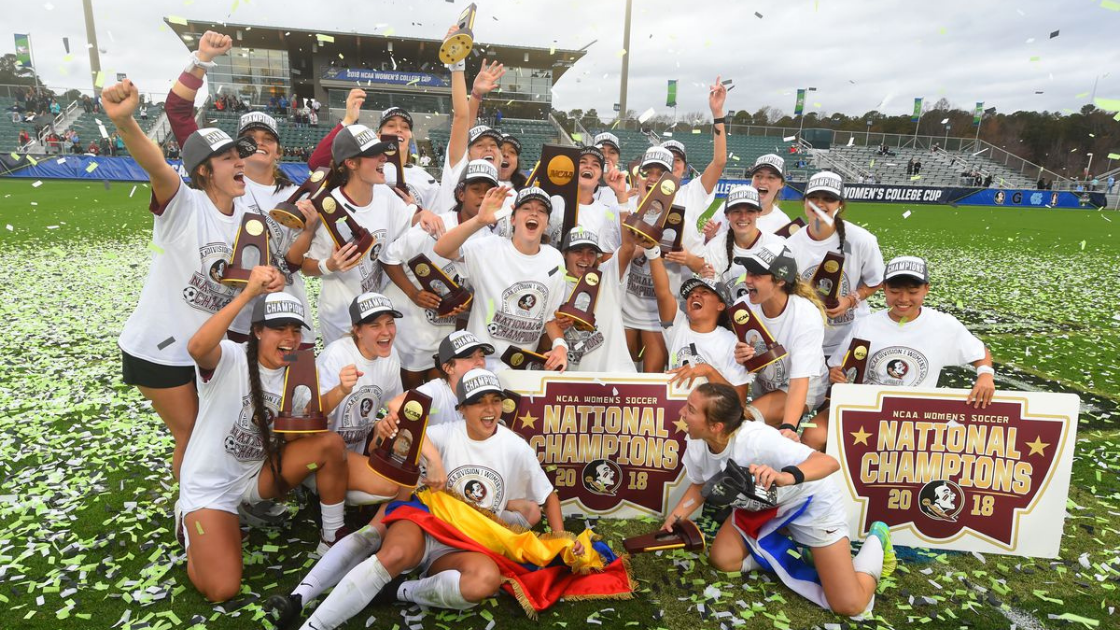When I was playing college soccer at Georgetown 12 years ago, there wasn't one team in the country using GPS wearable technology. Seven years ago, while I was working at IMG Academy in Bradenton, FL, the performance coaches had just started to experiment with wearables. Today, having worked at Catapult Sports for the last four years, I have found just about every single professional team uses some form of GPS technology across the NFL, MLS, NBA, and NHL. The majority of college football and soccer teams do as well, and a healthy percentage of teams in college basketball, field hockey, lacrosse, volleyball, and ice hockey.
Why are all these athletes wearing sports bras that hold these blinking devices between their shoulder blades? How does this technology help athletic performance, and why do coaches care about this data?
In this piece, I'll talk about the evolution of GPS wearable technology, specifically within the NCAA landscape, and how it has become such a central piece to athletic performance.
What does GPS wearable technology do, and how can it improve athletic performance?
If you don’t know what the specific physical demands are in your competitions, it’s impossible to optimize your training to prepare for those demands.
Athlete monitoring allows coaches to effectively measure the volume and intensity of their athlete’s training and competitions with an actual measuring stick to reduce soft tissue injuries, optimize performance and develop a more robust return to play protocols. The ancillary benefits of using a GPS system allow coaches to use the data as a communication tool, as well as a recruiting tool reflecting the coaching staff's commitment to student-athlete wellness and ultimately instilling a level of professionalism within the team.
Every team is unique in its personnel structure, but for many, having sports science support is essential in making actionable insights from the data.
Where did wearable technology come from, and who were the early adopters?
In what now is a very saturated marketplace, there were a few companies that were first to the table with GPS wearable technology, starting with Catapult. The Australian government decided to invest in the newly created Australian Institute of Sport (AIS) after a poor performance in the 1976 Olympic games.
Shaun Holthouse and Igor van de Griendt, eventual Catapult founders, began a project with the AIS in 1999. Taking a unique approach to evidence-based science improving sport, they began to measure all facets of athlete performance. Wearable sensors were then created to make science more accessible to athletes and more routinely deployable across training and match situations. They were implemented for the 2004 Athens games, and then Catapult was born in late 2006.
Aussie Rules Football began using the sensors before the technology expanded globally to rugby, soccer, and American Football in the following years.
How has it been adopted in the NCAA?
Inevitably this technology made its way over to the United States around 2012 as performance coaches started adopting it in their training. Florida State Women's Soccer was one of the first Catapult NCAA clients, using the GK devices on a couple of their goalies. Jimbo Fisher, the Head Coach of Florida State's football team at the time, saw an antenna on the field at a Women's Soccer practice. After doing a quick investigation of the tech, he started using it with his own team.
GPS tech quickly spread to football teams in the SEC Conference and then to the other Power 5 conferences. In a press conference after Alabama's 24-7 win in the 2016-17 Peach Bowl, Nick Saban, the Head Coach of Alabama, went on record saying how much Catapult helped with their conditioning. Today, every single SEC Conference football team, but one, uses Catapult technology. Many athletic departments have taken a holistic approach, doing multi-sport agreements, enabling cross-sport communication between performance coaches.
Today, this technology has trickled down beyond D2 and D3 into high school programs and even youth academies. The largest growth of wearable technology in the college space in recent years has been in the mid-major/FCS level of the NCAA.
What do you need to look for in a GPS wearable system?
1. Reliability - Even on the cheaper side of the market, wearable tech is still a significant investment and therefore making sure the technology has been validated (white papers, etc.) in its measuring accuracy is critical.
2. Functionality – Depending on the training environment and what the coaching staff values, there are a few features that you will want to vet out:
o Live capability - If looking at information live is important, you want to ensure the system has that capability (some do, many do not). Live tracking is good for return-to-play and rehabilitation protocols as well as in-game decision-making.
o Indoor and Outdoor functionality.
o Dual external & internal tracking capability (i.e., heart rate functionality)
3. Support – GPS wearable companies have a wide range of sizes. Some are equipped to provide meaningful support, while others only have a handful of employees. Every team is unique in its personnel structure, but for many, having sports science support is essential in making actionable insights from the data.

What is the next wave of innovation in the GPS wearable space?
While half of Catapult's business is built around GPS wearable technology, the other half is built around video editing software. This past summer, Catapult acquired a company called SBG, a UK-based video company that specializes in Formula 1 motorsport and elite soccer video solutions. The acquisition was a strategic one, as the SBG software has enabled Catapult to accelerate its ability to integrate wearable metrics onto video, allowing coaches to get more visual context to the physical data. With the wearable technology, you may know that your center forward made 40 high-velocity sprints during the match, but now with this wearable-video integration, you see exactly when those 40 high-velocity sprints happen and what has happened in the match. With the performance data married to the tactical information, the technology's value has grown exponentially and has become more digestible to your average coach.
Ben Slingerland has worked in the sports business industry for over the past 10 years. A former athlete himself playing 5 years of Division 1 college soccer at Georgetown University in Washington DC, Ben received both his BA and Master's in Sports Industry Management from the Hilltop. Ben has worked on the sales and marketing sides at companies like Nike, IMG Academy, ThirdChannel and most recently Catapult Sports. In his 4 years at Catapult, Ben has headed up the business development efforts within the Olympic sports at Power 5 Division 1 colleges and universities in the eastern half of the country. Ben resides in Boston, Massachusetts. Ben is a Mentor in theClubhouse and you can schedule a call with him here.

